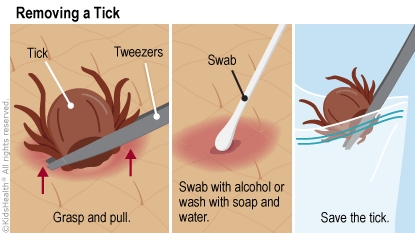- Home
- Humana Medicaid
- Kentucky Medicaid
- Medicaid extras
- Health and wellness
- Home
- Parents Home
- Allergy Center
- Asthma Center
- Cancer Center
- Diabetes Center
- A to Z Dictionary
- Emotions & Behavior
- First Aid & Safety
- Food Allergy Center
- General Health
- Growth & Development
- Flu Center
- Heart Health
- Homework Help Center
- Infections
- Diseases & Conditions
- Nutrition & Fitness Center
- Play & Learn Center
- School & Family Life
- Pregnancy Center
- Newborn Center
- Q&A
- Recipes
- Sports Medicine Center
- Doctors & Hospitals
- Videos
- Para Padres
- Home
- Kids Home
- Asthma Center
- Cancer Center
- Movies & More
- Diabetes Center
- Getting Help
- Feelings
- Puberty & Growing Up
- Health Problems of Grown-Ups
- Health Problems
- Homework Center
- How the Body Works
- Illnesses & Injuries
- Nutrition & Fitness Center
- Recipes & Cooking
- Staying Healthy
- Stay Safe Center
- Relax & Unwind Center
- Q&A
- Heart Center
- Videos
- Staying Safe
- Kids' Medical Dictionary
- Para Niños
- Home
- Teens Home
- Asthma Center
- Be Your Best Self Center
- Cancer Center
- Diabetes Center
- Diseases & Conditions
- Drugs & Alcohol
- Expert Answers (Q&A)
- Flu Center
- Homework Help Center
- Infections
- Managing Your Medical Care
- Managing Your Weight
- Nutrition & Fitness Center
- Recipes
- Safety & First Aid
- School & Work
- Sexual Health
- Sports Center
- Stress & Coping Center
- Videos
- Your Body
- Your Mind
- Para Adolescentes
How Can I Prevent Lyme Disease?
Does the thought of Lyme disease make you worry about enjoying the great outdoors? Here are some ways to lower your risk for Lyme disease.
What Is Lyme Disease?
Lyme disease is an infection caused by a type of bacteria. The bacteria can spread to humans through the bit of an infected tick. The infection can lead to problems with the skin, heart, brain, and joints. Treatment with antibiotics usually cures Lyme disease, especially when started early. Rarely, symptoms of Lyme disease can last after treatment.
Do All Tick Bites Cause Lyme Disease?
No. Only deer ticks (sometimes called black-legged ticks) cause Lyme disease. And most people bitten by one of these ticks don't usually get Lyme disease because:
- Only a small number of these ticks are infected with the bacteria that cause Lyme disease.
- An infected tick must be attached for at least 1–2 days to pass the bacteria.
Who Gets Lyme Disease?
Anyone bitten by an infected deer tick can get Lyme disease. Most U.S. cases of Lyme disease happen in Connecticut, Delaware, Maine, Maryland, Massachusetts, Minnesota, New Hampshire, New Jersey, New York, Pennsylvania, Rhode Island, Vermont, Virginia, and Wisconsin. But Lyme disease is found in other parts of the world, too.
Besides living in one of these areas, other things that might increase your risk include:
- spending a lot of time outdoors in tall grass, brush, shrubs, or wooded areas
- having pets that may carry ticks indoors
- activities such as yardwork, hiking, camping, fishing, or hunting in tick-infested areas
Can I Prevent Lyme Disease?
Not all cases of Lyme disease can be prevented. But you can protect yourself from tick bites. If you go into an area where ticks live, be sure to:
- Stay in the middle of the trail instead of going through high grass or the woods.
- Wear closed shoes or boots, long-sleeved shirts, and long pants. Tuck pant legs into shoes or boots to prevent ticks from crawling up legs.
- Use an insect repellent.
- Consider treating your clothing and gear with permethrin to repel ticks.
- Wear light-colored clothing to help you see ticks more easily.
- Shower and wash hair after being outside to remove ticks before they attach.
- Remove any ticks you find right away.
How Do I Remove a Tick?
You should know how to remove a tick just in case one lands on you or a friend. To be safe, remove the tick as soon as possible.
If you find a tick:
- Call your doctor, who may want you to save the tick after removal so that the tick can later be identified as the type that may carry Lyme disease. You can put the tick in a sealed container to preserve it.
- Use tweezers to grasp the tick firmly at its head or mouth, next to your skin.
- Pull firmly and steadily on the tick until it lets go of the skin. If part of the tick stays in your skin, don't worry. It will eventually come out. But call your doctor if you notice any irritation in the area or symptoms of Lyme disease.
- Swab the bite site with alcohol.

Note: Don't use petroleum jelly or a lit match to kill a tick. They won't get the tick off your skin quickly enough, and may just cause it to burrow deeper into your skin.

© 1995- The Nemours Foundation. KidsHealth® is a registered trademark of The Nemours Foundation. All rights reserved.
Images sourced by The Nemours Foundation and Getty Images.